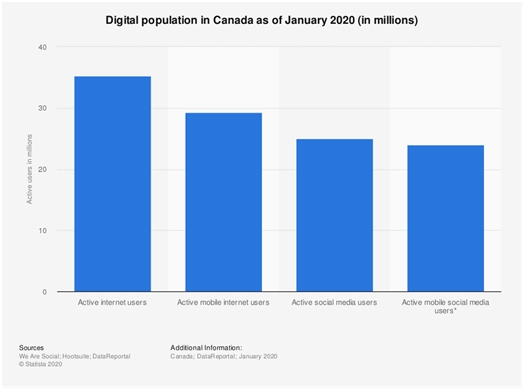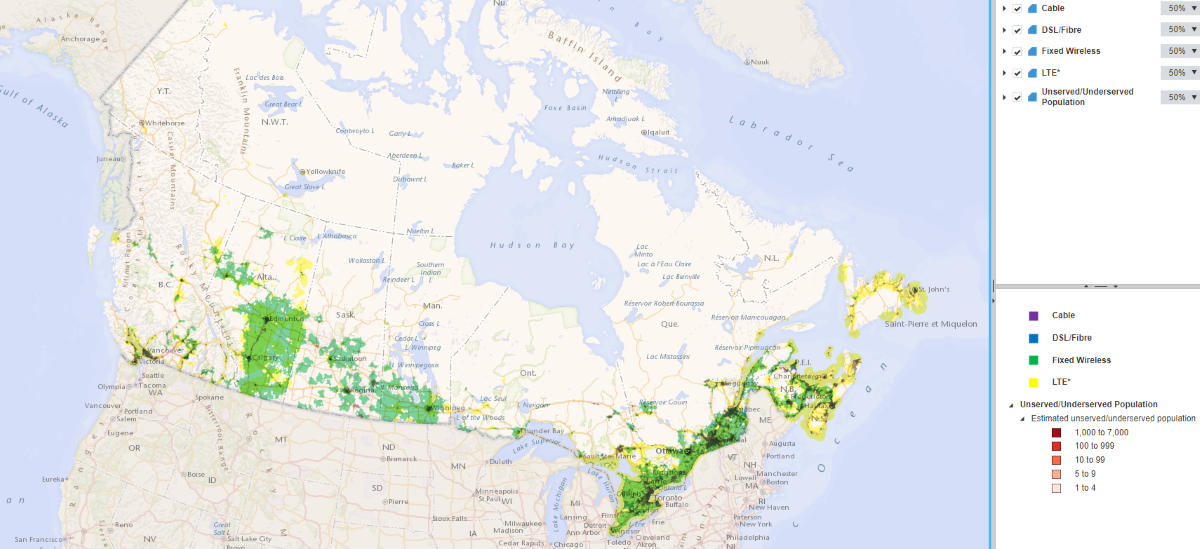
Broadband Internet in Ottawa-It’s Getting Better all the time
Canada is one of the leading countries in the world when it comes to broadband Internet availability. By 2015, 82 per cent of the population will have access to fast connections. In 2020, the average Internet speed per user was 82 Mbit/s. In 2016, the Chair of The Canadian Radio-television and Telecommunications Commission declared that broadband Internet was a "necessary standard of living" for every citizen of the country,saying “The future of our economy, our prosperity and our society — indeed, the future of every citizen — requires us to set ambitious goals, and to get on with connecting all Canadians for the 21st century." By 2030, the necessary expansion work should be completed.

Broadband Internet in Ottawa compared to other Canadian cities
High speed internet is available in most of Ontario and Quebec is similarly well connected. There is still a challenge with connectivity in remote areas and in areas that are referred to as blank areas where signals can drop.

Source: https://crtc.gc.ca/cartovista/internetcanada-en/
Internet in Ottawa is mainly wireless
Most connections in Ottawa, Toronto and other larger Ontario cities are fixed wireless or Long-Term Evolution (LTE) connections.Digital subscriber line or DSL, (which were originally digital subscriber loop) – a family of technologies that are used to transmit digital data over telephone lines are on the wane as other technologies like Wireless Local Area Network (WLAN) expand.
Wireless Internet can still be problematic at times as speed per user decreases with more users and can cause network breakdowns. However improvements in technology and a laser focus by companies to ensure this does not happen is making wireless connectivity the norm. As more people work from home and with the expansion and popularity of video conferencing ,technology companies are very committed to providing customers seamless, problem-free digital service.
The next chapter in the expansion of digital services is the 5G expansion which is already underway. 5G is the fifth generation technology standard for broadband cellular networks, which cellular phone companies began deploying worldwide in 2019, and is the planned successor to the 4G networks which provide connectivity to most current cellphones Like its predecessors, 5G networks are cellular networks, in which the service area is divided into small geographical areas called cells. All 5G wireless devices in a cell are connected to the Internet and telephone network by radio waves through a local antenna in the cell. The main advantage of the new networks is that they will have greater bandwidth, giving higher download speeds,[1] eventually up to 10 gigabits per second (Gbit/s). Due to the increased bandwidth, it is expected the networks do not exclusively serve cellphones like existing cellular networks, but also be used as general internet service providers for laptops and desktop computers, competing with existing ISPs such as cable internet, and also will make possible new applications in internet of things (IoT) and machine to machine areas. 4G cellphones are not able to use the new networks, which require 5G enabled wireless devices.
5G is a promising technology for many rural and remote communities in Canada,especially Inuit communities in the North or Indigenous communities in places like Manitoulin Island in Northern Ontario. This spectacularly beautiful area has a thriving local tourism sector but continues to have broadband access challenges that limit its economic growth potential.
The good news is that broadband coverage is continually improving in Canada and 5G will make a big difference as this trend continues.
Photo: Nabil Saleh, Unsplash











